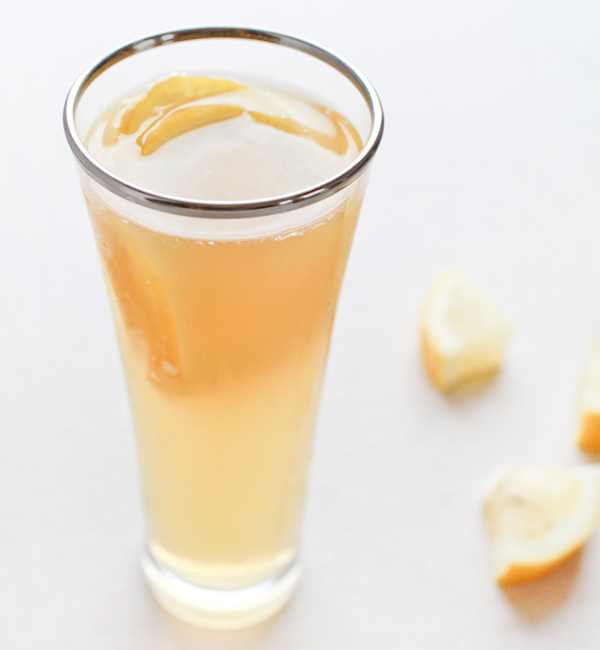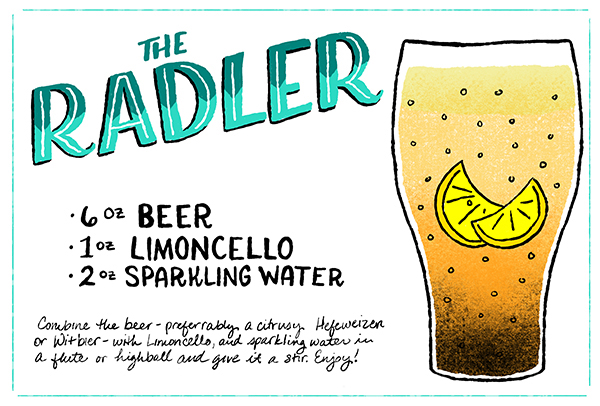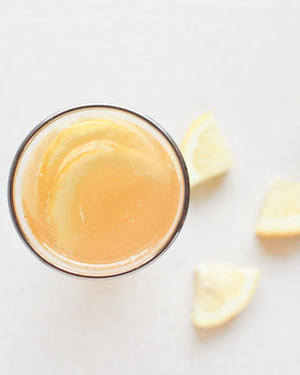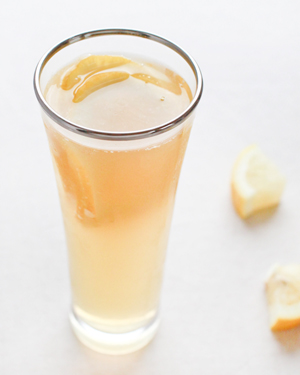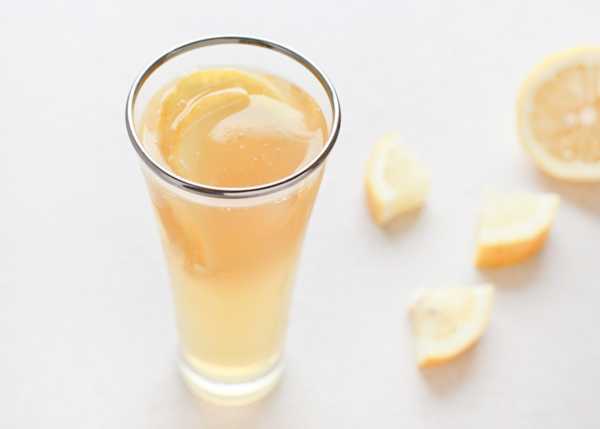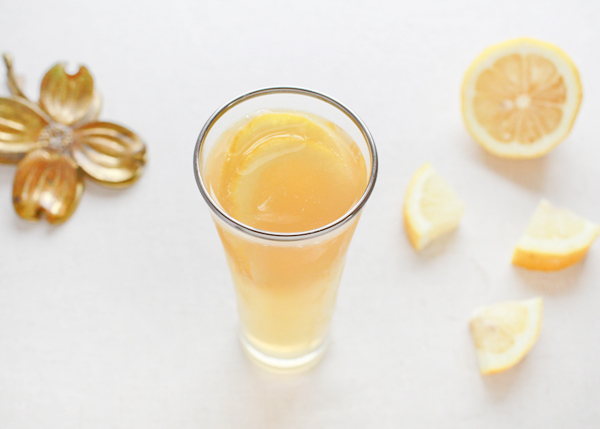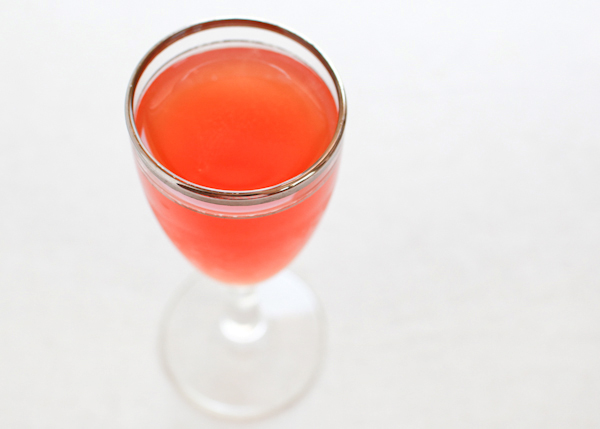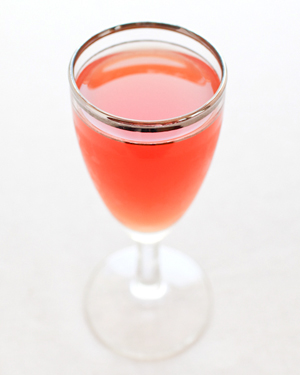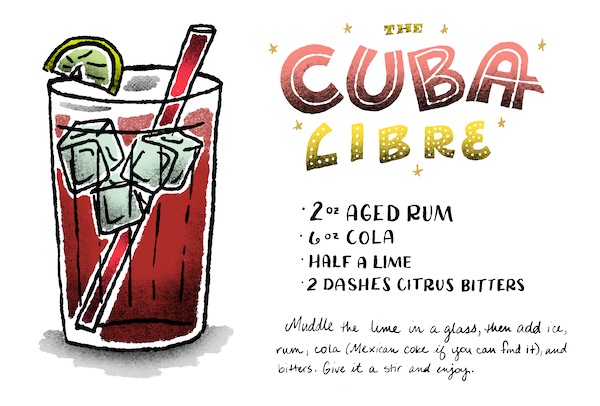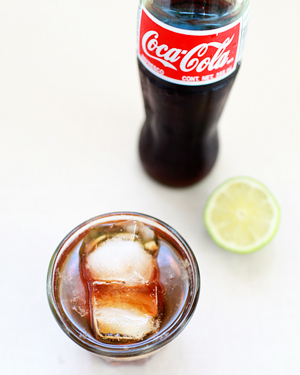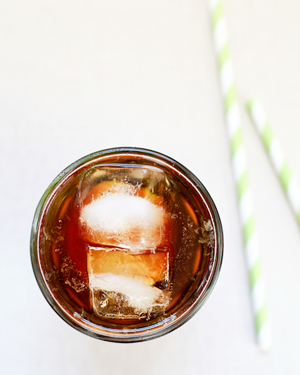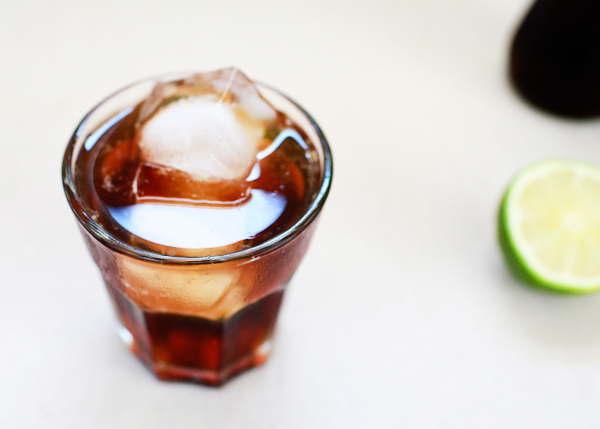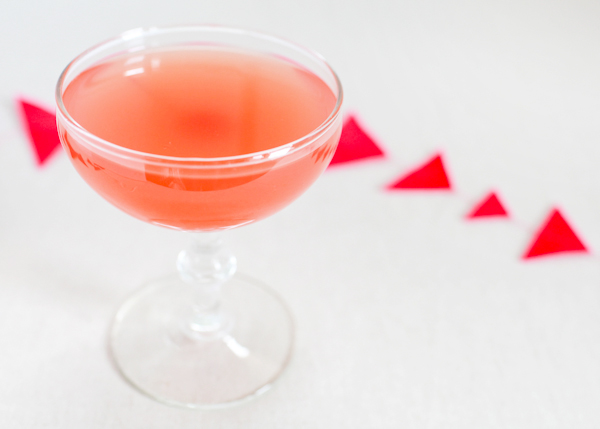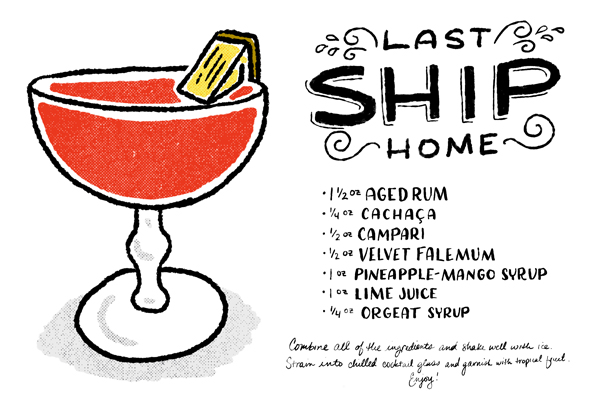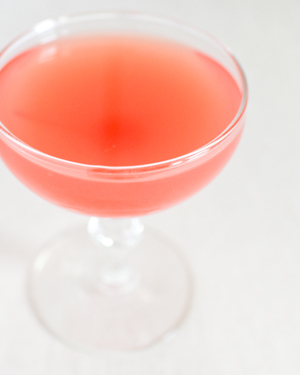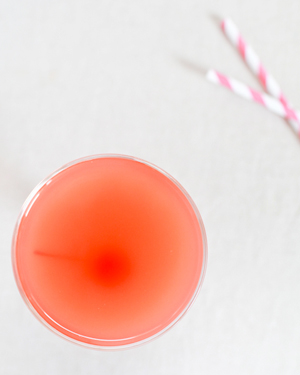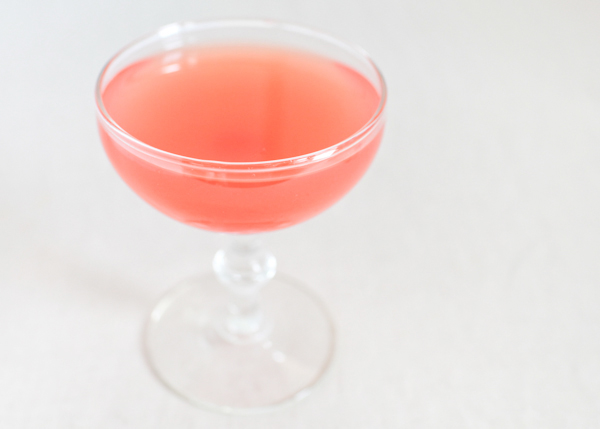When I start writing a post about a classic and venerable cocktail like the Tom Collins, I do some research. I look into the history of the drink, the development of its recipe, all that jazz. But I also like to do research into how people are drinking a particular cocktail now. And what I found for the Tom Collins bums me out a bit. Did you know that people sell Tom Collins mix? I have to repeat that because it leaves me a little flabbergasted: Tom Collins mix. What the what? Here’s what a Tom Collins is: a gin sour with some soda water. So simple! And perfect for summer, sweet and tart, crisp and effervescent – especially with the addition of some in-season summer fruit. Not at all in need of a bottled mix. – Andrew
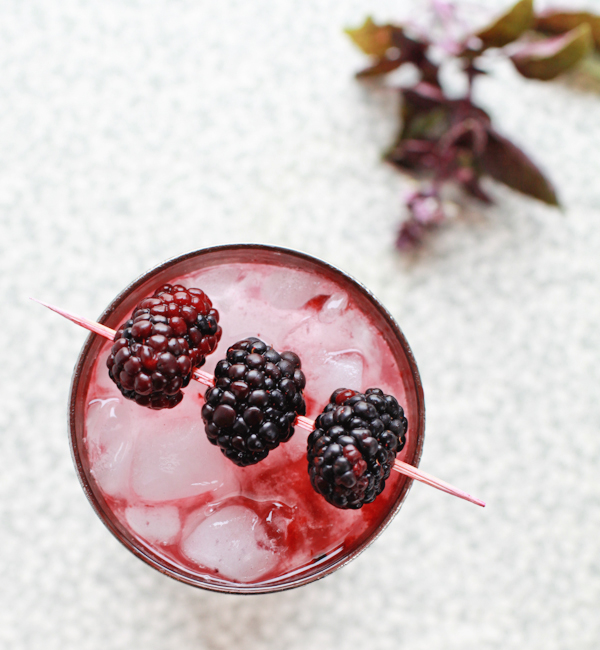
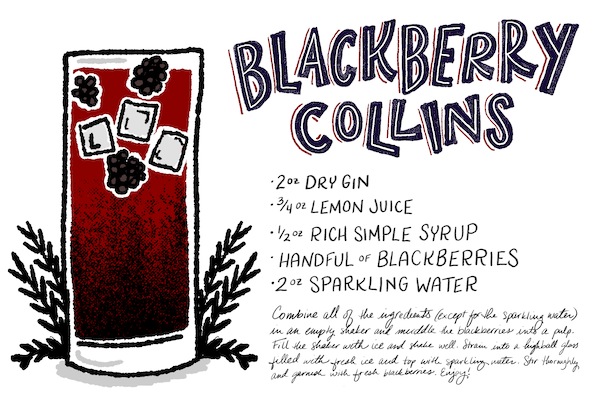
Illustration by Shauna Lynn for Oh So Beautiful Paper
The Blackberry Collins
2 oz Dry Gin
3/4 oz Lemon Juice
1/2 oz Rich Simple Syrup
Handful of Blackberries
2 oz Sparkling Water
Combine all of the ingredients (except for the sparkling water, unless you want your shaker to explode) in an empty shaker and muddle the blackberries into a pulp. Fill the shaker with ice and shake well. Strain into a highball glass filled with fresh ice and top with the sparkling water. Stir thoroughly and garnish with fresh blackberries. Enjoy!
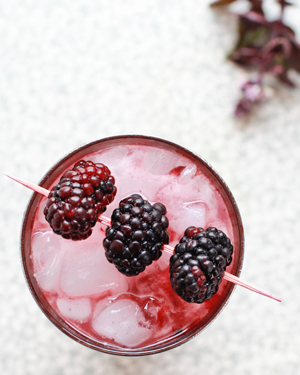
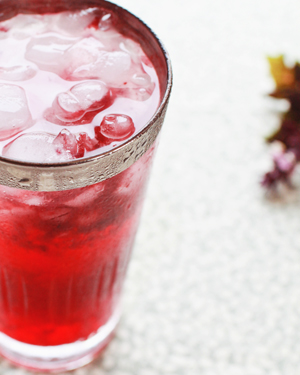
Nole and I went blackberry picking last weekend, and we have a ton of blackberries sitting around. It’s only natural that some of them would end up in a cocktail. So that’s what we did: we took a basic Tom Collins recipe and added some blackberries. And the result is pretty good – bursting with sweet fruit and cold bubbles. Have one or two on the porch before summer is over and you’ll never consider a bottled mix ever.
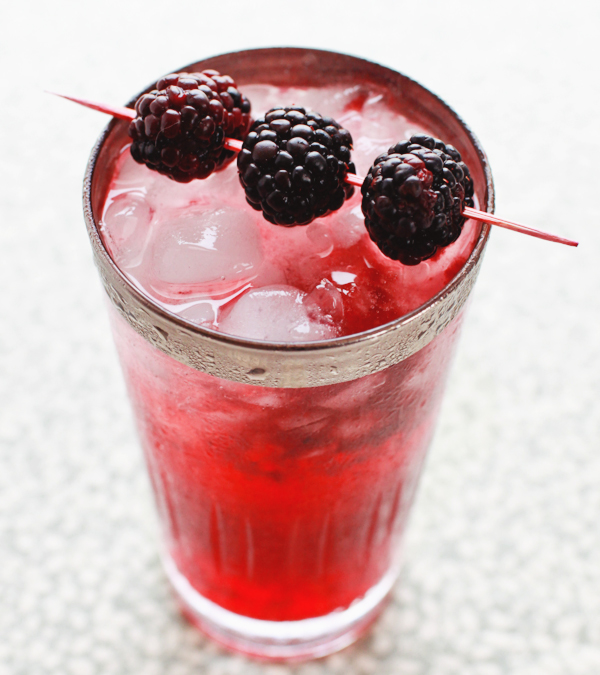
Didn’t I say something about history? Right. The Tom Collins is probably a couple hundred years old and, not surprisingly, appeared right after Charles Plinth invented the first soda water dispenser in London in 1813. Credit usually goes to John Collins, a waiter or maybe a bartender at London’s Limmer’s Hotel, who took the commonsense step of adding Plinth’s soda water to a gin sour. By the 1870s, the drink was showing up in print as the Tom Collins, maybe because bartenders had started making the drink with Old Tom Gin instead of the original Genever or maybe because everyone was drinking way too many of them to remember if it was Tom or John or Jim, so let’s all just agree to call them Tom Collins and order a few more.
Photo Credits: Nole Garey for Oh So Beautiful Paper

